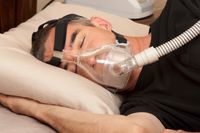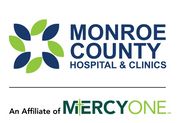What to Expect From Sleep Study Participation

Maybe you’ve recently experienced problems falling or staying asleep. Perhaps you doze off during the day when you should be focused on work or the kids, or you snore almost every night. Whatever the nature of the shut-eye issue, participating in a sleep study can identify the condition and determine a treatment course that helps you get full nights of rest once more. Learn what taking part in these studies entails to get a solid idea of what you’re in for.
Participating in a Sleep Study? What You Need to Know
Types of Tests
Sleep studies vary based on the conditions they’re monitoring. Polysomnogram studies record brain activity, eye and leg movements, heart rate, breathing, body movement, and blood oxygen levels over the course of one night. They help diagnose sleep-related seizure disorders, breathing disorders such as sleep apnea, issues from excessive daytime sleepiness (EDS), and periodic limb movement disorder.
 CPAP titration studies use continuous positive airway pressure machines to keep the airways open throughout the night for treatment of sleep apnea. Maintenance of wakefulness test (MWT) studies typically follow polysomnograms. They’re daytime studies determining your alertness level and ability to remain awake throughout the day. The multiple sleep latency test (MSLT) is another daytime, post-polysomnogram test determining the effectiveness of apnea-related breathing treatments.
CPAP titration studies use continuous positive airway pressure machines to keep the airways open throughout the night for treatment of sleep apnea. Maintenance of wakefulness test (MWT) studies typically follow polysomnograms. They’re daytime studies determining your alertness level and ability to remain awake throughout the day. The multiple sleep latency test (MSLT) is another daytime, post-polysomnogram test determining the effectiveness of apnea-related breathing treatments.
Preparation
If you will participate in a daytime study, expect to go about the daily routine while being monitored. If it’s scheduled for overnight, eat dinner around the same time you normally would and do the same bedtime preparation tasks, such as reading and brushing your teeth. Bring clothes to sleep in as well as any usual medications and morning toiletries. It’s also important to arrive at the facility a little before your typical bedtime and abstain from caffeinated and alcoholic beverages.
Process
After filling out the relevant paperwork, the registered polysomnographic technologist (RPSGT) will review what your sleep study will include before administering wires, belts, a nasal cannula, and other monitoring tools to measure brain activity, breathing, and body movements. After sleeping in the lab all night, the technician will wake you, usually between 6:00 a.m. and 7:00 a.m. to remove the monitors. Most sleep facilities have showers so participants can leave for work or other engagements instead of having to go home first. Expect the results seven to 10 days after participation to determine what treatments work best for your condition.
If participating in sleep studies is right for you, contact Monroe County Hospital & Clinics in Albia, IA. The full-service hospital has served the region for over 100 years and provides help with sleep among many other services, including radiology and emergency room care. Call (641) 932-2134 today to make an appointment or request one online. Get the latest updates on Facebook.
About the Business
Have a question? Ask the experts!
Send your question

